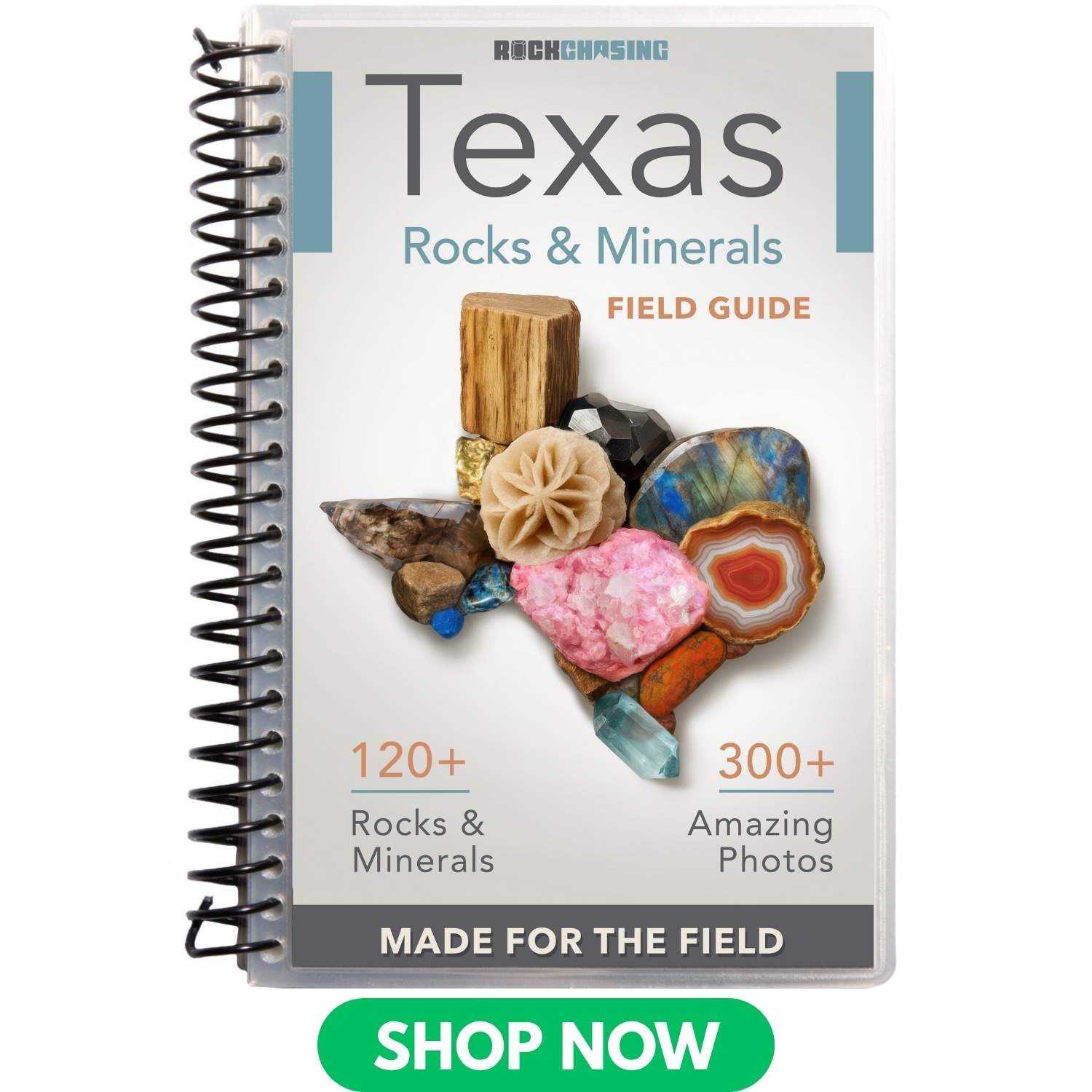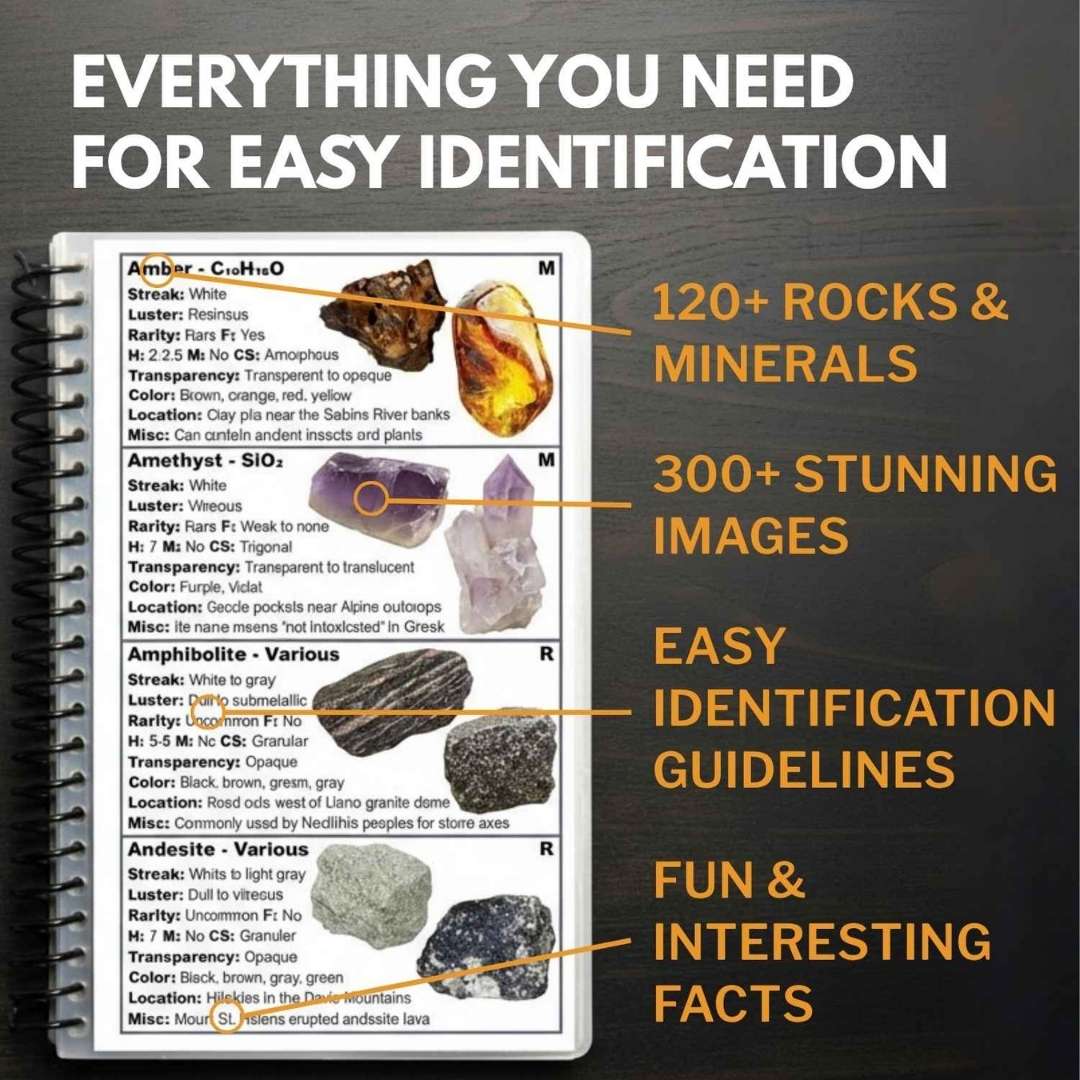Texas is known for its diverse landscapes, from deserts to forests, and it’s also rich in minerals. Pyrite, often called “fool’s gold,” is one of the most exciting finds for rockhounds. However, many struggle to find good spots to search, often ending up with nothing.
The mistake? Not knowing where to look. Pyrite isn’t scattered everywhere, and finding it takes more than just luck. We’ve gathered the best locations in Texas where pyrite is commonly found, so you don’t waste time on dead ends.
With these locations, you’ll be able to focus your search and save time, ensuring your next rockhounding trip is a success. We’ll give you everything you need to find real pyrite, from where to look to what to look for.
Just make sure you bring along Rock Chasing’s Texas Rocks & Minerals Identification Field Guide so you can easily recognize what you uncover and avoid walking past a golden find without realizing it.
How Pyrite Forms Here
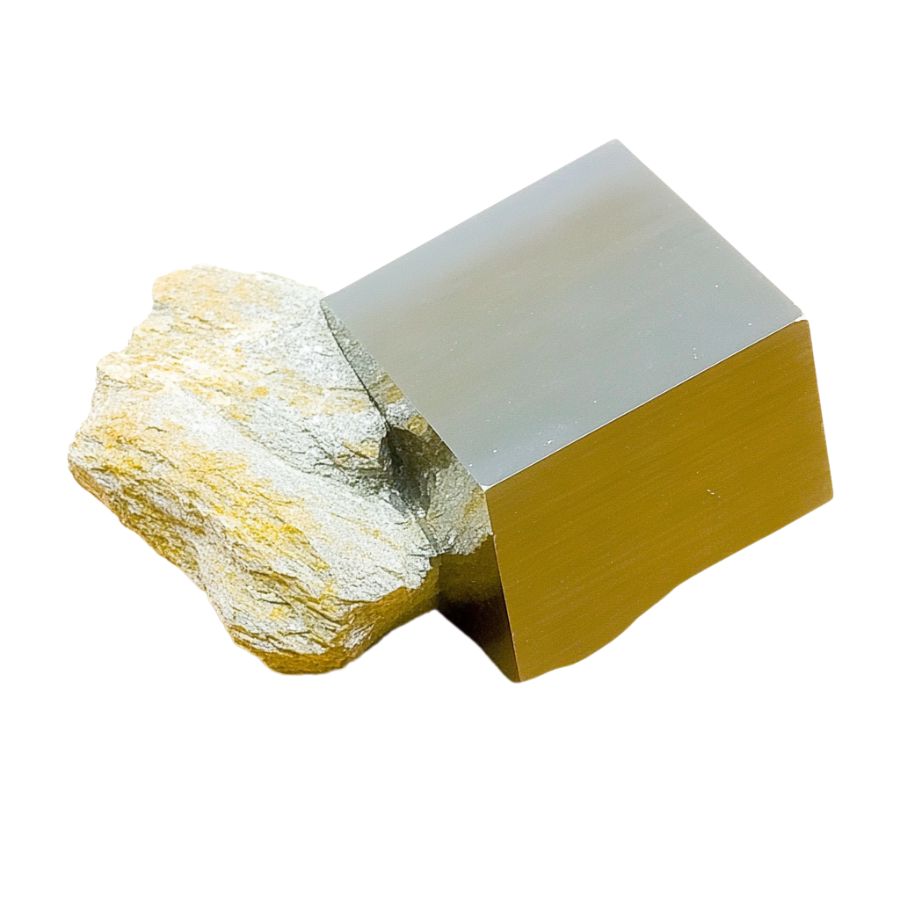
Pyrite forms when iron and sulfur combine in oxygen-poor environments, like deep in ancient seas or swamps.
The magic happens when iron-rich water meets sulfur-producing bacteria – these tiny organisms actually help create the perfect conditions for pyrite to grow!
As the bacteria break down organic matter, they release sulfur, which quickly bonds with the iron. Over time, these elements crystallize into pyrite’s distinctive cubic shapes at fairly low temperatures.
Sometimes, it forms slowly, replacing dead plants or sea creatures bit by bit, preserving their shapes as perfect golden fossils. The more pressure and heat, the bigger and more perfect the crystals become.
Types of Pyrite
Pyrite comes in several distinct forms and shapes, each with its own unique characteristics. Knowing these different varieties will help you identify what you’ve found.
Cubic Pyrite
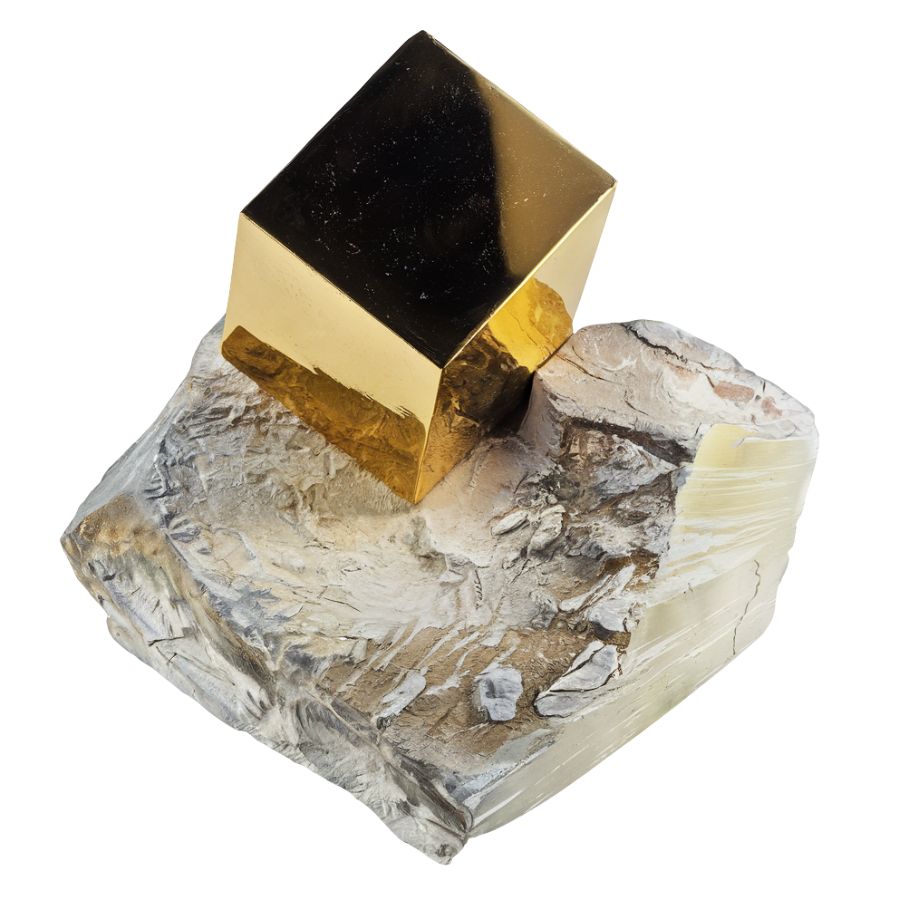
Cubic Pyrite showcases perfect cube-shaped crystals with sharp, well-defined edges and corners. While the classic form is golden, Cubic Pyrite can also appear in shades of brown or green.
What’s fascinating about Cubic Pyrite is how the crystals often cluster together, creating stunning geometric patterns. Sometimes, smaller cubes grow on larger ones, forming complex arrangements that collectors particularly value.
These specimens often develop alongside other minerals, which can create striking contrast effects.
Some pieces display interesting growth patterns where cubes appear to be stacked or intergrown with each other, creating unique architectural-like formations that make each specimen special.
If you want REAL results finding incredible rocks and minerals in Texas you need one of these 👇👇👇
Finding the coolest rocks in Texas isn’t luck, it's knowing what to look for. Thousands of your fellow rock hunters are already carrying Rock Chasing field guides. Maybe it's time you joined the community.
Lightweight, mud-proof, and packed with clear photos, it’s become the go-to tool for anyone interested discovering what’s hidden under our red dirt.
Join them, and make your next rockhounding trip actually pay off.
📘 Order the Texas Field Guide Now →
What makes it different:
🚙 Field-tested across Texas rivers, ranchlands, and roadcuts.
📘 Heavy duty laminated pages resist dust, sweat, and water.
🧠 Zero fluff — just clear visuals and straight-to-the-point info.
📍 Find hidden gems like Blue Topaz, Texas agate, and petrified wood fast.
⭐ Rated 4.8★ by real collectors who actually use it in the field.
Cathedral Pyrite
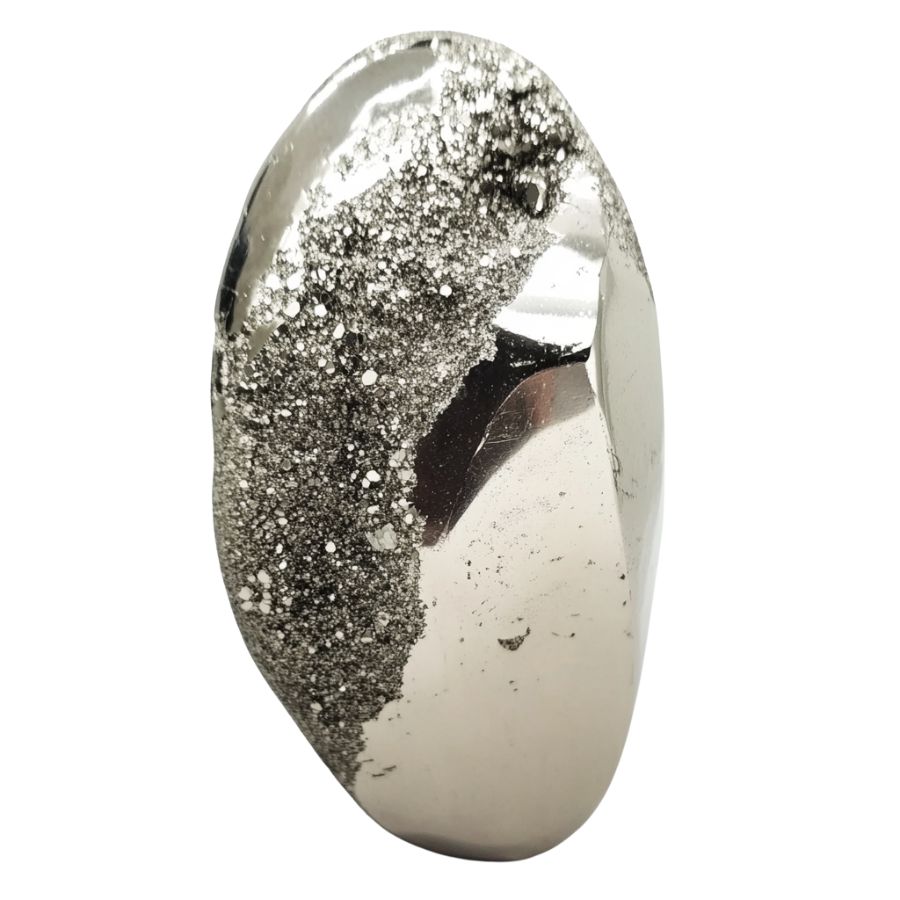
Cathedral Pyrite displays intricate surface patterns that look like delicate etchings or gothic window designs. The surface typically shows a bright, metallic luster that enhances these unique patterns.
It exhibits a combination of cubic and modified dodecahedral forms, which contribute to its unique appearance.
The crystal’s surface features result from natural etching processes during formation. This creates deeper grooves and raised areas that form symmetrical patterns.
Most specimens show variations in the depth and complexity of their etchings. Some areas might have fine, detailed patterns while others show broader, more pronounced features.
Pyrite Sun

Pyrite Sun forms in flat, disc-shaped specimens with radiating patterns that spread from the center outward. These pieces look like metallic sunbursts, with lines extending in all directions.
The radiating pattern is actually made up of countless tiny crystals arranged in a circular formation. This arrangement creates a natural symmetry that makes each piece look like a golden medallion or ancient sun symbol.
These specimens sometimes develop with interesting surface textures. Some pieces show subtle ridges along the radiating lines, while others might have a slightly bumpy texture.
The flat shape of the Pyrite Sun makes it distinctly different from other pyrite formations.
Pyritohedral Pyrite
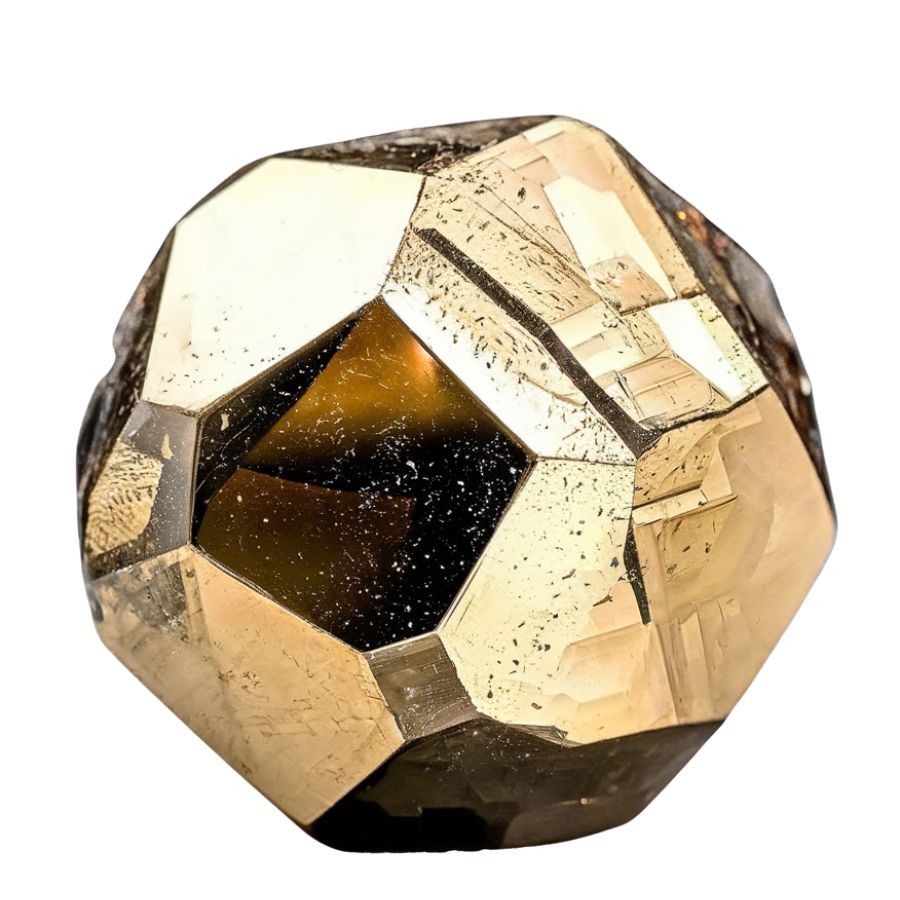
Pyritohedral Pyrite forms in unique twelve-sided shapes called pentagonal dodecahedra. Each face is a perfect pentagon. The crystals show the same bright, metallic golden color typical of pyrite, but in this distinctive shape.
Large single crystals of Pyritohedral Pyrite are particularly impressive. They can form either as individual crystals or in groups, sometimes creating interesting clusters where multiple dodecahedral shapes grow together.
One of the unique aspects of pyritohedral pyrite is its crystallography, which shows striated surfaces conforming to its pyritohedral symmetry.
Additionally, pyrite can form complex intergrowths known as framboids, which resemble raspberry-like clusters, adding to its visual appeal.
Rainbow Pyrite
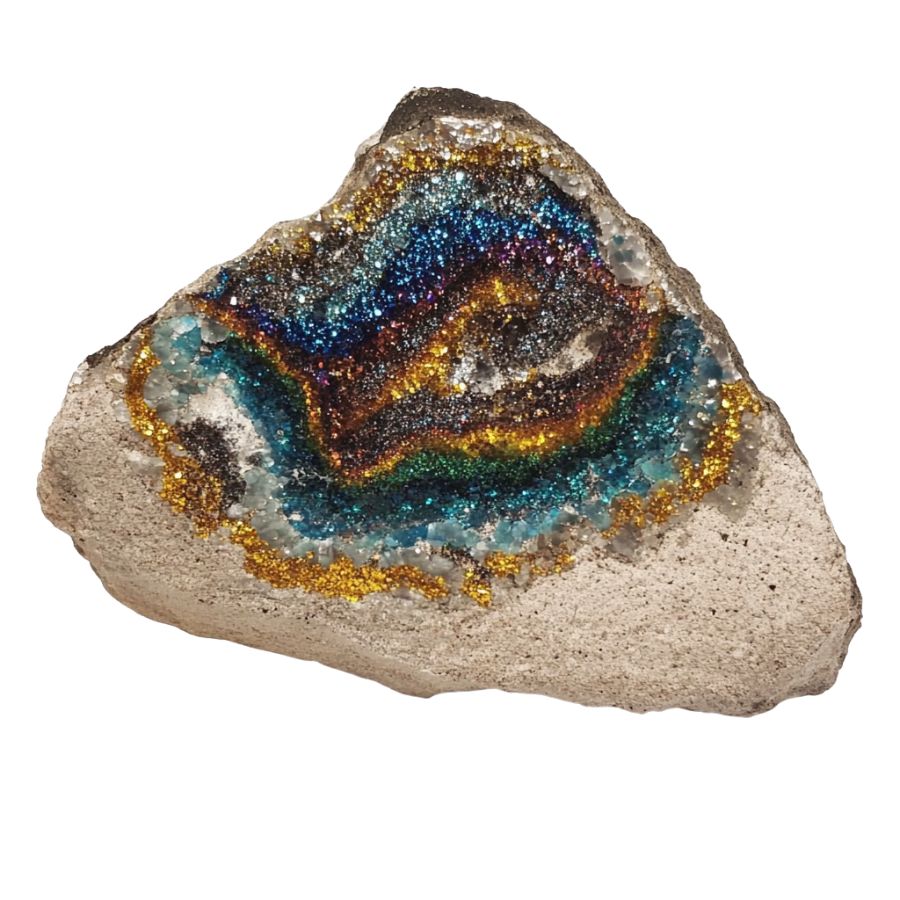
Rainbow Pyrite displays stunning iridescent colors that shimmer across its surface. These colors range from bright blues and greens to purples and pinks, creating a peacock-like effect. The colors change and shift as you move the stone, making each viewing angle unique.
The iridescent effect comes from a thin layer of oxidation on the surface. The base crystal usually maintains its metallic shine underneath these colorful patterns.
The intensity of colors varies between specimens, with some showing bold, vivid hues while others display more subtle tints.
The variability in color and pattern also adds to its allure. Additionally, it is considered a type of druzy, which refers to a layer of tiny crystals coating another rock, further enhancing its desirability among rockhounders.
Navajún Pyrite
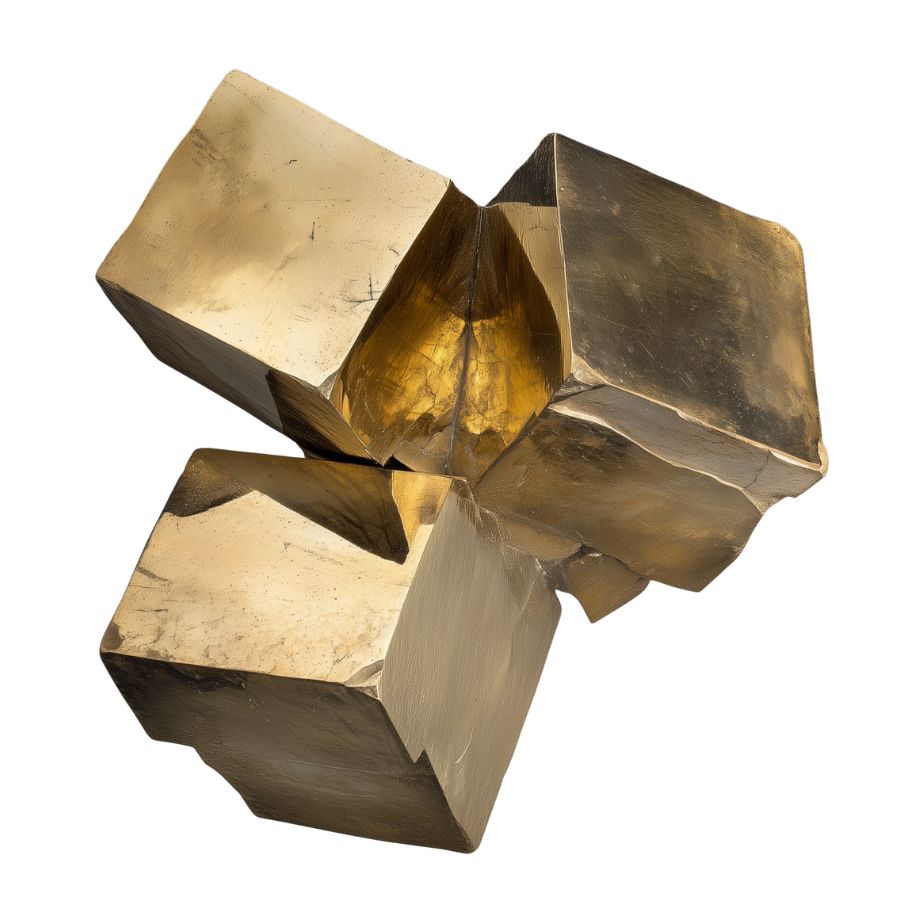
Navajún Pyrite forms perfect, sharp-edged cubes that seem almost man-made in their precision. These cubes have mirror-like surfaces. Their edges are remarkably crisp and well-defined.
The cubes can range from tiny specimens to impressive large crystals several inches across.
The conditions in Navajún have been optimal for millions of years, resulting in some of the largest and most intricate pyrite clusters found globally. The region’s geology allows for a high density of pyrite, with estimates reaching up to 100 kg per cubic meter.
A unique feature is the thin, soft coating that naturally preserves these crystals. This coating helps protect the sharp edges and brilliant surfaces from damage. When carefully removed, it reveals the pristine crystal faces underneath.
Octahedral Pyrite
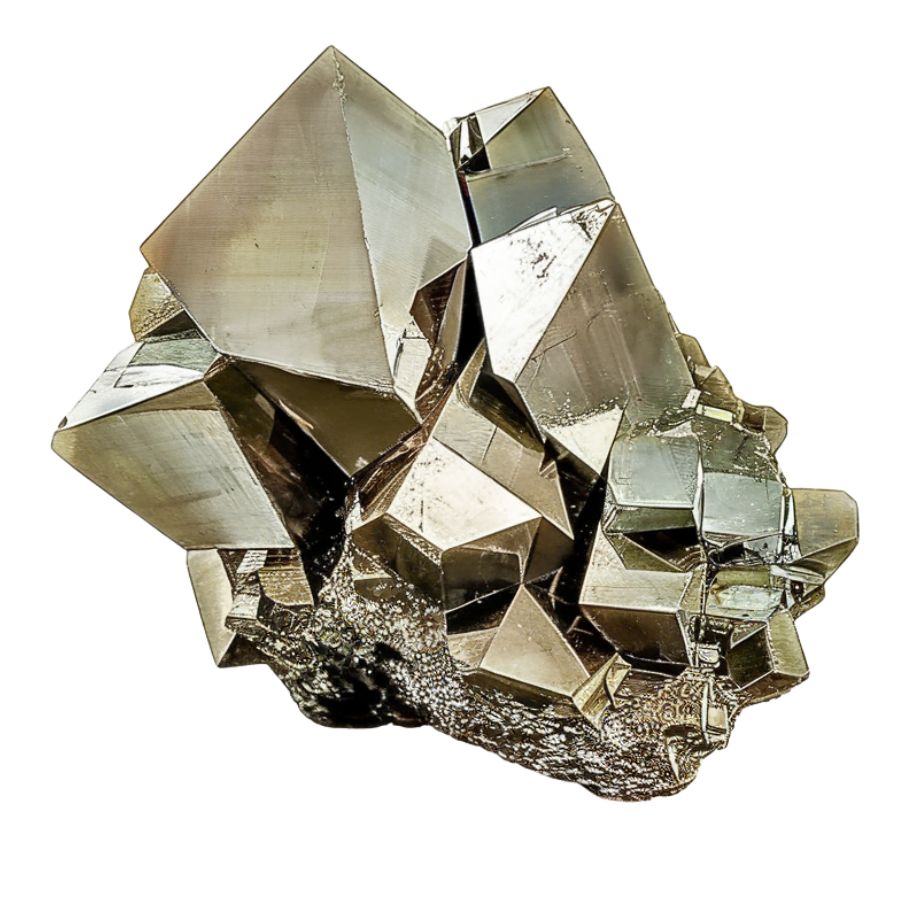
Octahedral pyrite crystals are characterized by their eight triangular faces, which belong to the {111} family of crystal facets. This octahedral form is less common than the cubic shape but is still prevalent in nature.
The faces of these crystals are typically smooth and free from the striations commonly seen on cubic pyrite.
They show a bright, metallic golden color that’s particularly striking when light hits the triangular surfaces. Some crystals develop interesting modifications where additional small faces appear at the edges or corners.
The formation of these octahedral crystals depends on specific growth conditions. Sometimes they combine with other crystal forms, creating more complex shapes that show both octahedral and cubic faces on the same specimen.
Striated Pyrite
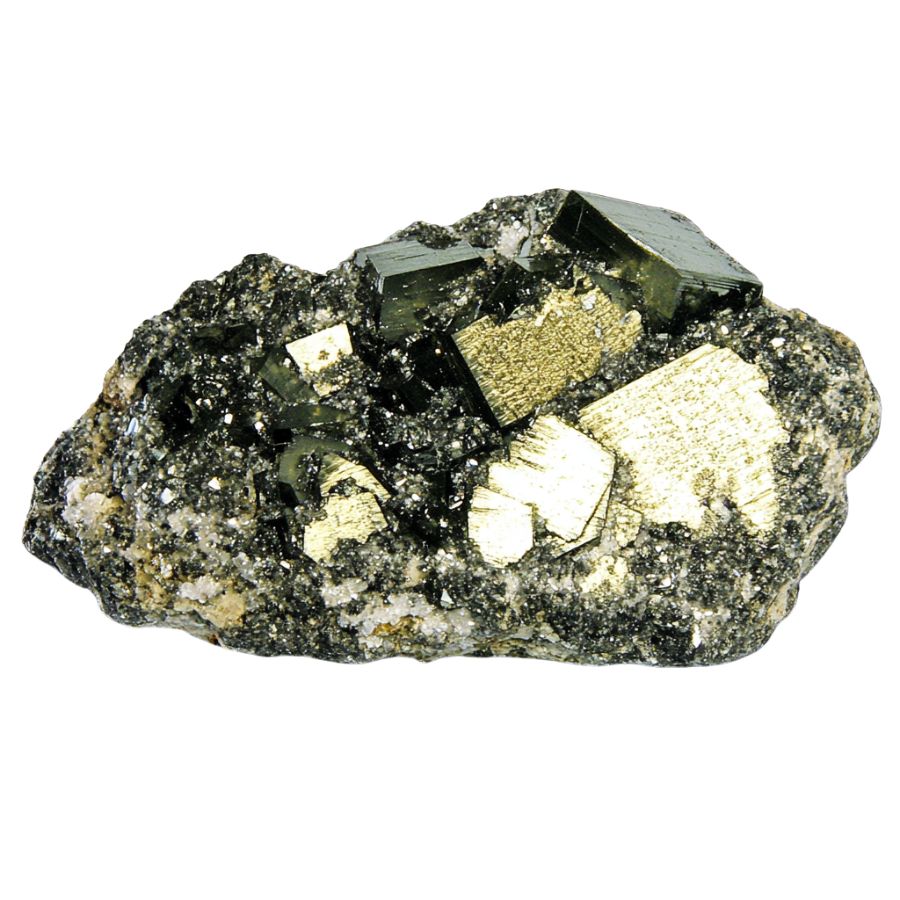
Striated Pyrite features distinctive parallel lines etched across its crystal faces. The lines can be fine and delicate or more pronounced, creating various surface patterns.
It typically forms in well-defined shapes, including cubic, octahedral, and pyritohedral forms.
The striations often run in specific directions on each crystal face. This creates an organized appearance, where the lines on adjacent faces meet at specific angles. The overall effect makes the crystal surface look like it’s been carefully engraved.
Some specimens show multiple sets of striations that cross each other, creating grid-like patterns. The depth and spacing of these lines vary between specimens. The striated surface maintains the crystal’s metallic golden color while adding visual complexity.
What Rough Pyrite Looks Like
Pyrite, often called “Fool’s Gold,” has some distinctive features that make it stand out. Here’s how you can spot rough pyrite even if you’re new to rocks and minerals.
Look for the Classic Brassy-Yellow Color
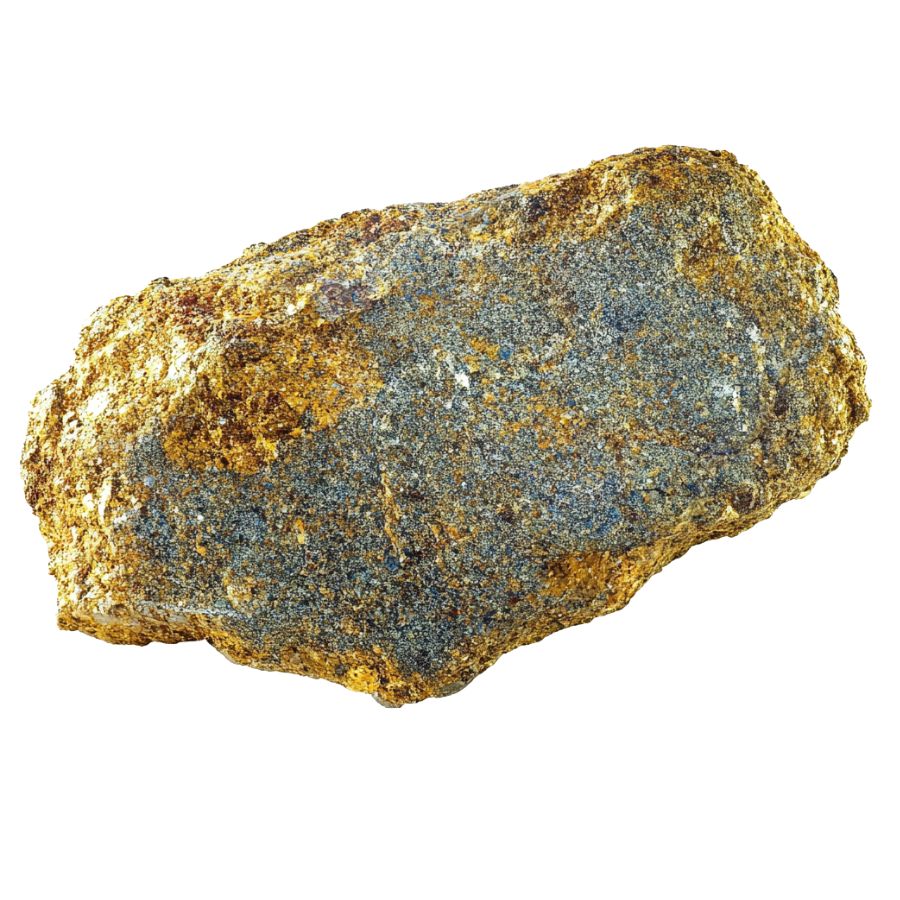
The most obvious giveaway is pyrite’s metallic, brassy-yellow color. But don’t be fooled by its gold-like appearance! Unlike real gold, pyrite has a more pale, silvery undertone.
If you tilt it under light, you’ll notice it’s less warm and rich than genuine gold. Sometimes, it might show tarnish spots with rainbow-like colors – that’s another clue you’re looking at pyrite.
Check the Crystal Structure
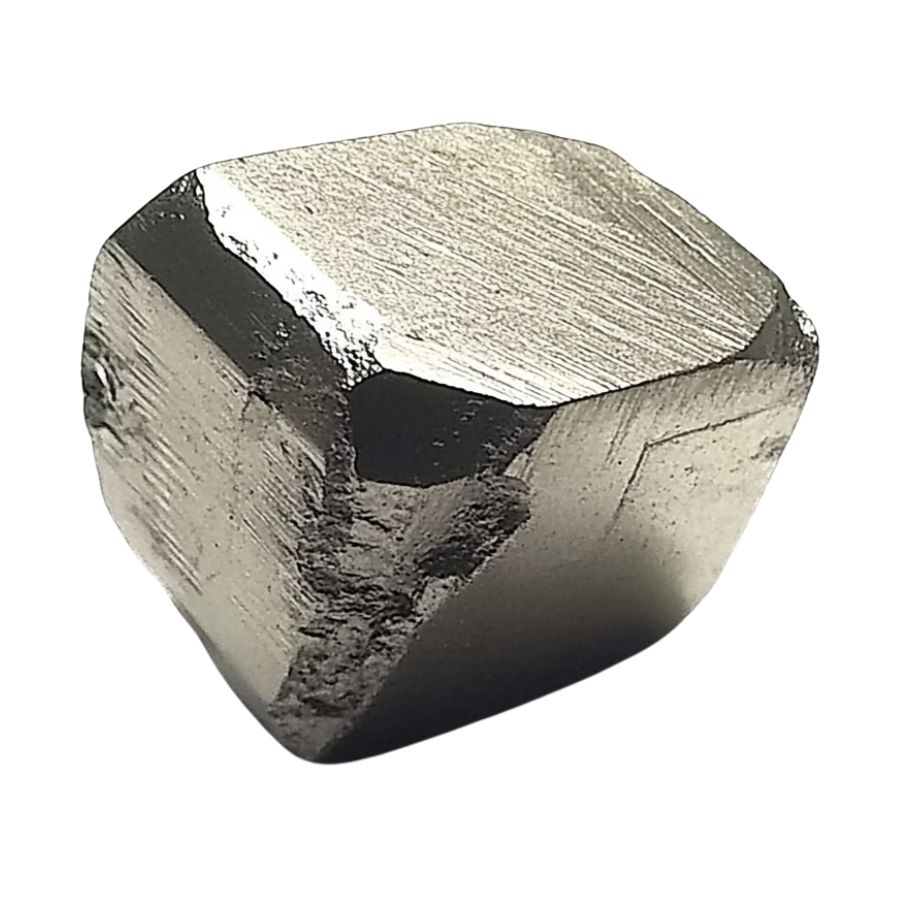
Raw pyrite typically forms in cubic or octahedral shapes – think dice-like cubes or eight-sided formations.
Even in rough chunks, you can spot these geometric patterns. Look for flat surfaces meeting at sharp angles.
Sometimes, you’ll see striations (parallel lines) on the crystal faces, which is super characteristic of pyrite. Gold never forms such crisp, angular shapes.
Test the Hardness and Brittleness

Here’s a cool trick: try scratching pyrite with a nail. Unlike soft gold, pyrite’s pretty hard (6-6.5 on Mohs scale) and will resist scratching.
It’s also brittle – if you manage to break a piece, it’ll have an uneven, jagged fracture. Gold, on the other hand, is soft and malleable, more likely to bend than break.
Examine the Surface Texture
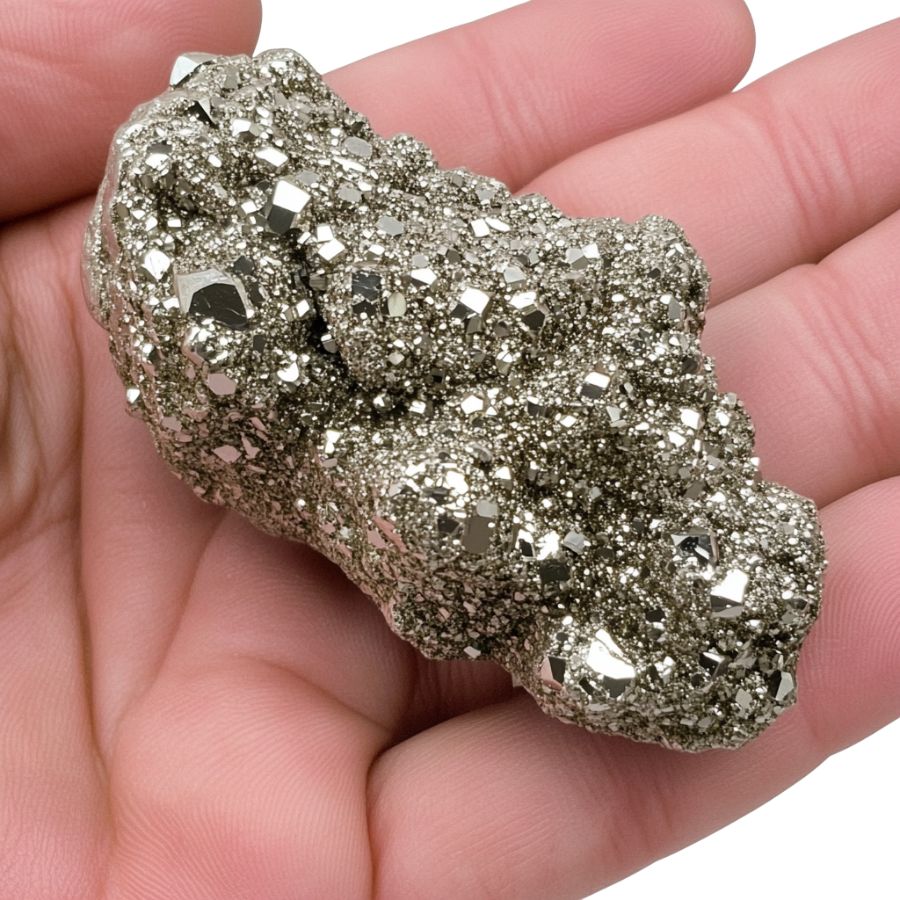
Run your fingers over rough pyrite. Feel those sharp edges and rough surfaces? That’s typical. Look for a surface that’s almost sparkly. Fresh breaks often reveal a bright, metallic luster.
Sometimes you’ll spot tiny crystal faces catching light from different angles – kind of like miniature mirrors reflecting sunlight.
The Tools You Will Need
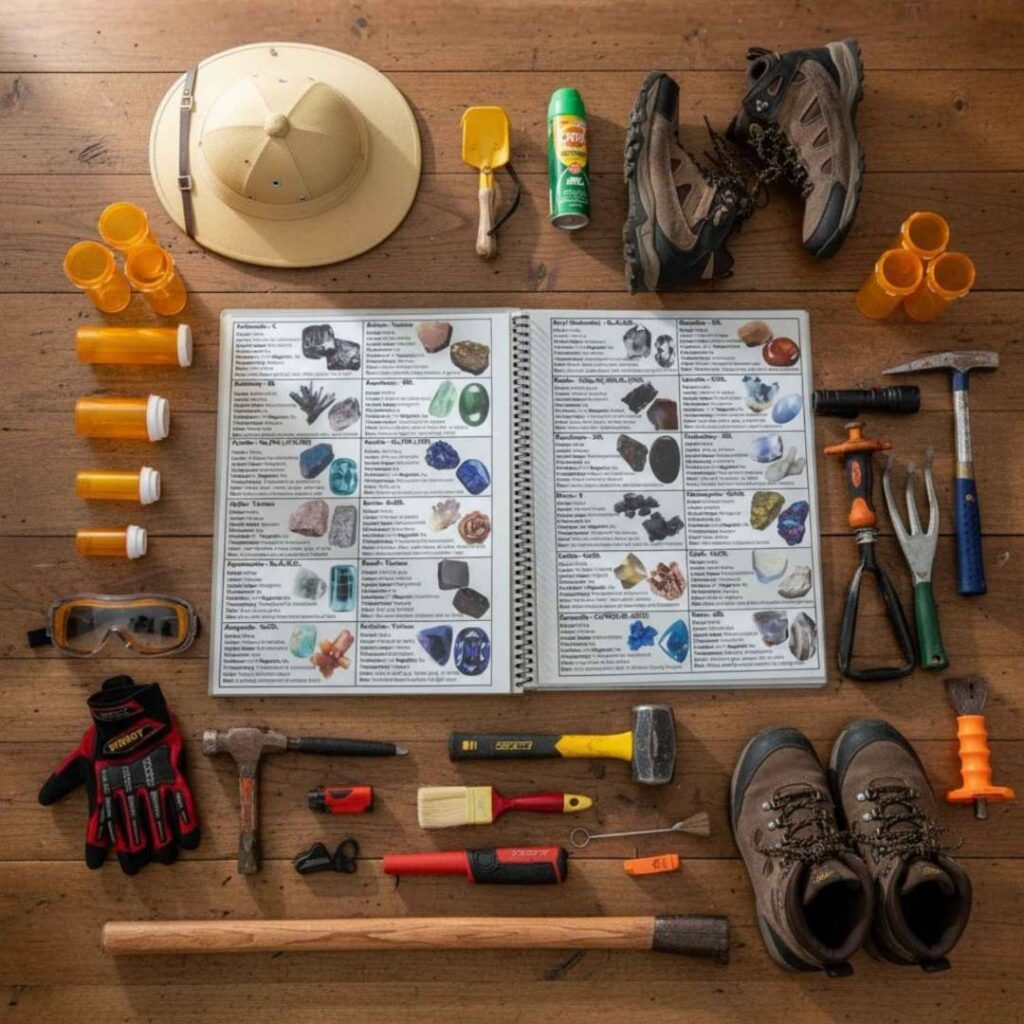
Hunting for pyrite doesn’t require fancy or expensive gear, just the right basics. With a few simple tools, you can explore confidently, identify your finds, and make the most of every trip. These are the essentials that help beginners go from guessing to spotting real “Fool’s Gold” in the wild.
A Reliable Field Identification Guide – Essential
Pyrite can fool even experienced rockhounds, and a clear guide helps you spot the difference between true metallic crystals and look-alike minerals that only glitter in the light. It keeps you from wasting time on fakes and makes every trip more productive.
Rock Chasing’s Texas Rocks & Minerals Identification Field Guide is built for people who’d rather explore than guess. It’s small enough to slip in a bag, waterproof enough to handle dust and rain, and loaded with crisp photos of real Texas finds.
With it, you can move through a site with confidence, knowing exactly what you’re looking at before you walk away from something valuable.
You can see HERE why it’s so popular with thousands of Texas rockhounds.
Rock Hammer – Essential
A sturdy rock hammer lets you chip, break, or split rocks cleanly to reveal what’s inside. It’s perfect for checking out quartz veins, separating softer layers, and loosening pieces embedded in clay or limestone. Just make sure you wear eye protection when using it.
Shovel or Trowel – Recommended
You won’t need a full-sized shovel unless you’re digging deep, but a small garden trowel or short digging tool helps when working along creek beds or exposed hillsides. It’s especially useful for prying up compacted dirt or gravel without damaging what’s underneath.
Safety Glasses – Essential
Rockhounding means flying chips and dust. Safety glasses protect your eyes from sharp fragments when breaking or cleaning rocks. They’re light, cheap, and save you from the kind of accident that ends a trip fast.
Bucket or Drawstring Bag – Recommended
Once you start finding interesting pieces, you’ll need something sturdy to carry them. A plastic bucket or canvas bag keeps your finds together and prevents damage. It’s also a great place to stash any tools you’re not using.
Tips on Where to Look
Pyrite is pretty common and can be found in many places. Here are some locations where you’re likely to spot these shiny golden cubes.
Sedimentary Rock Areas
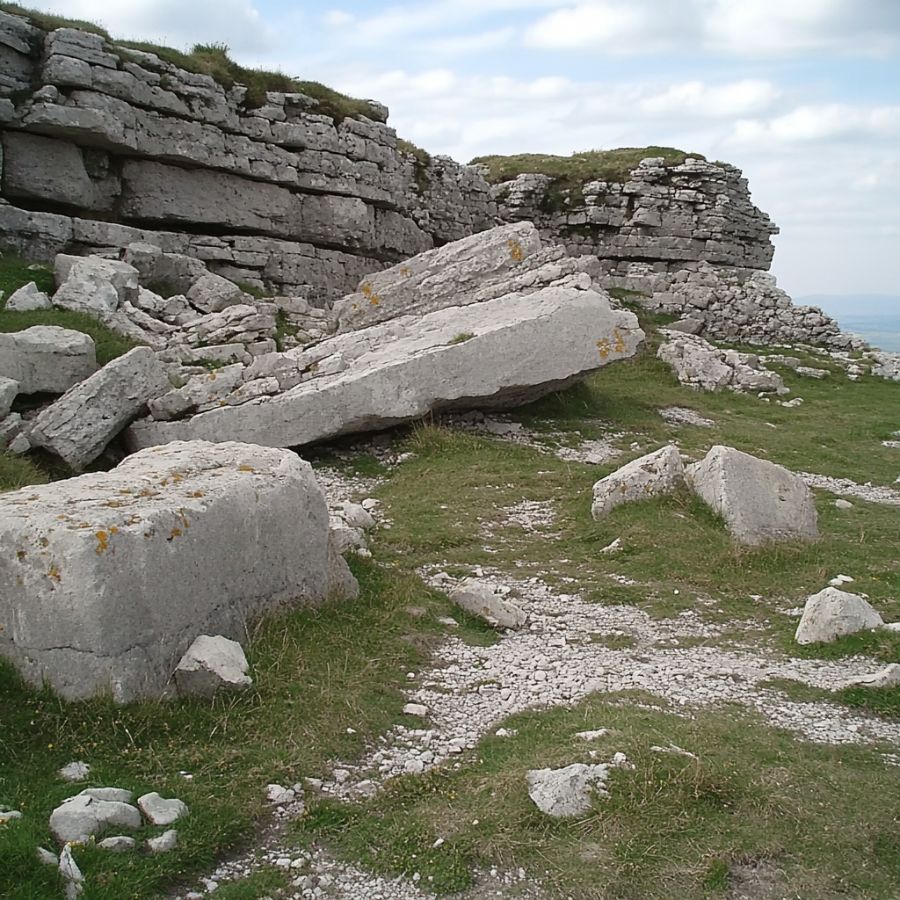
Look for dark shale or limestone outcrops. These rocks often have pyrite chunks embedded in them. Check cliff faces and road cuts where these rocks are exposed. The darker the sedimentary rock, the better your chances.
Sometimes, you’ll find perfect little cubes just sitting there in the rock matrix, waiting to be discovered after millions of years of formation in these ancient sea beds that have transformed into solid rock formations over time.
Old Mining Sites
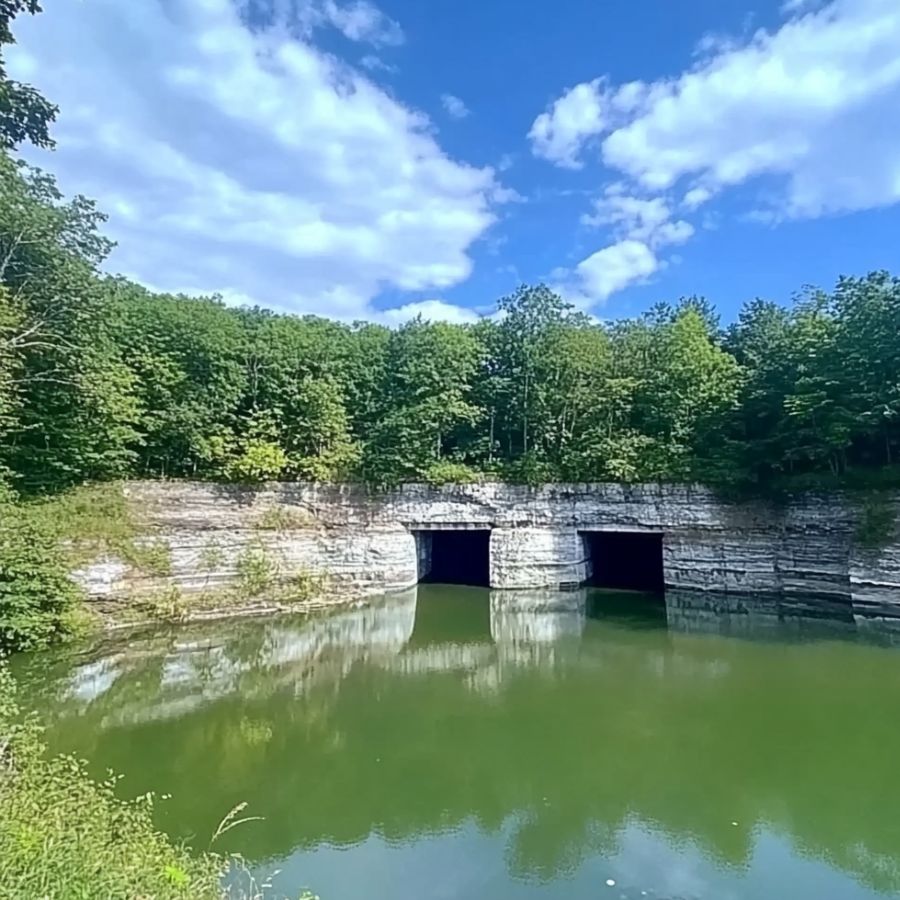
Search around abandoned quarries that are open to the public. Focus on areas where they mined coal or metal ores. Pyrite often shows up in mine dumps and tailings piles.
Look through the scattered rocks – pyrite’s metallic shine makes it easy to spot. Bring a spray bottle with water to wet rocks. Makes pyrite stand out better.
Stream Beds
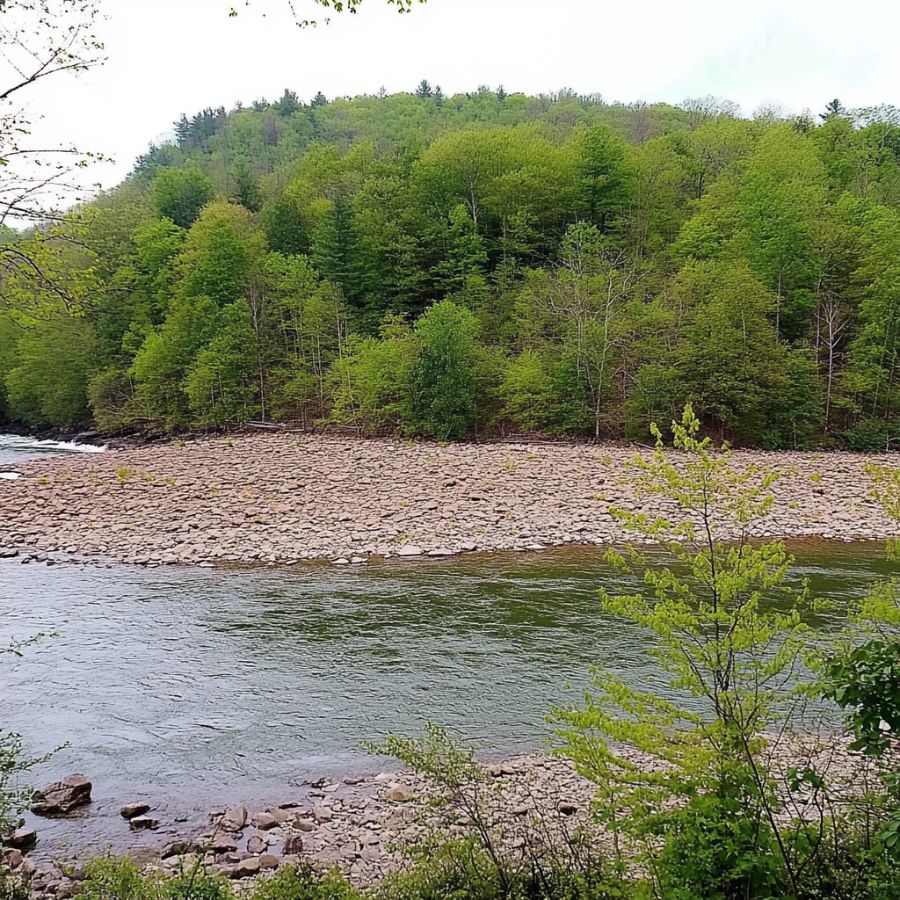
Check gravel bars in streams. Look where water slows down. Dark sand patches often contain tiny pyrite bits. Dig a few inches deep in stream gravels.
Use a gold pan – pyrite is heavy and sinks like gold. Best after rain when fresh material gets exposed.
Clay Banks
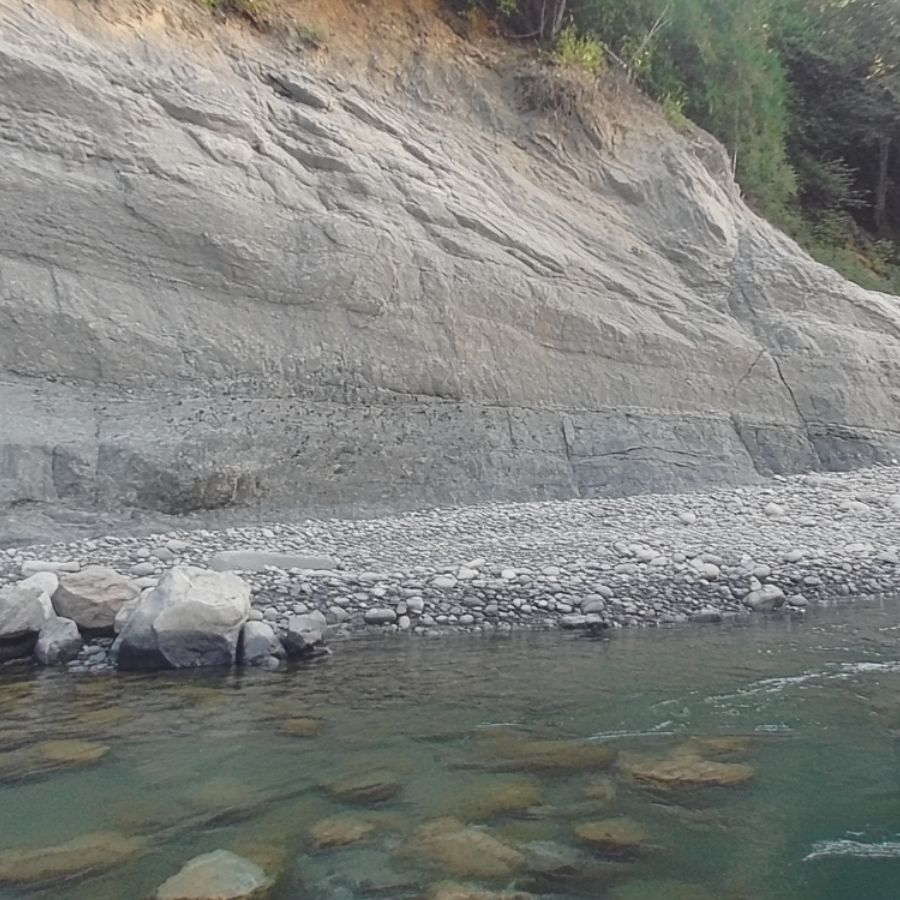
Hunt along eroded clay banks. Pyrite forms in clay deposits. Check areas where clay is gray or blue. Break open clay chunks – pyrite forms inside.
Look for rusty stains – good indicator. These spots often have pyrite crystals weathering out of the clay. Easier to spot on sunny days when crystals glitter.
Some Great Places To Start
Here are some of the better places in the state to start looking for Pyrite:
Always Confirm Access and Collection Rules!
Before heading out to any of the locations on our list you need to confirm access requirements and collection rules for both public and private locations directly with the location. We haven’t personally verified every location and the access requirements and collection rules often change without notice.
Many of the locations we mention will not allow collecting but are still great places for those who love to find beautiful rocks and minerals in the wild without keeping them. We also can’t guarantee you will find anything in these locations since they are constantly changing.
Always get updated information directly from the source ahead of time to ensure responsible rockhounding. If you want even more current options it’s always a good idea to contact local rock and mineral clubs and groups
Franklin Mountains
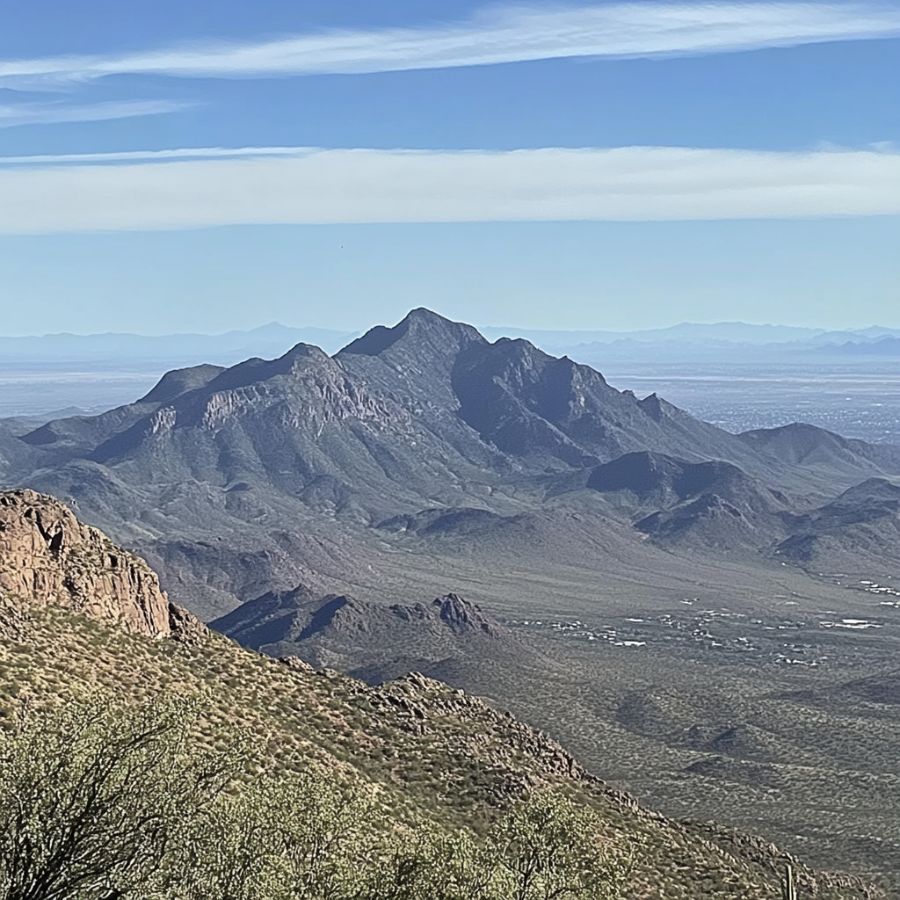
Towering over the city of El Paso, the Franklin Mountains are one of the most striking geological formations in West Texas. This rugged range, part of the larger Basin and Range Province, is composed of ancient limestone, shale, and igneous rocks, making it a fascinating spot for rockhounds.
Pyrite has been discovered in various mineralized zones within the Franklin Mountains, often found in association with quartz veins and calcite deposits.
The best places to search are near old mine dumps and exposed rock faces along the hiking trails.
While searching for pyrite, rockhounds might also stumble upon other minerals like chalcopyrite and malachite. The area’s rich mining history means that abandoned prospects may sometimes yield hidden treasures.
You've probably walked past some incredible rocks and minerals. You need this guide 👇👇👇
We've all come across a cool rock that we could have sworn was rare or valuable but couldn't tell what it was.
If you're not 100% confident that you know every rock and mineral in Texas this guide is for you.
The Texas Rocks & Minerals Field Guide helps you ID what you find in seconds, from Hill Country agates to Llano granite, with crisp photos, simple charts, and zero fluff.
→ Grab your copy today and spot your next gem before anyone else does.
What this guide unlocks:
🧭 Confidence in the field — ID rocks fast and move on to the next find
🎒 Lightweight and waterproof — built for trails, not coffee tables
🌅 Weekend adventures — find treasures on rivers, ranches, and roadsides
🤠 Texas pride — explore the real geological beauty of your state
🔥 Motivation — every trip outside feels like a hunt for hidden gems
Deep Creek
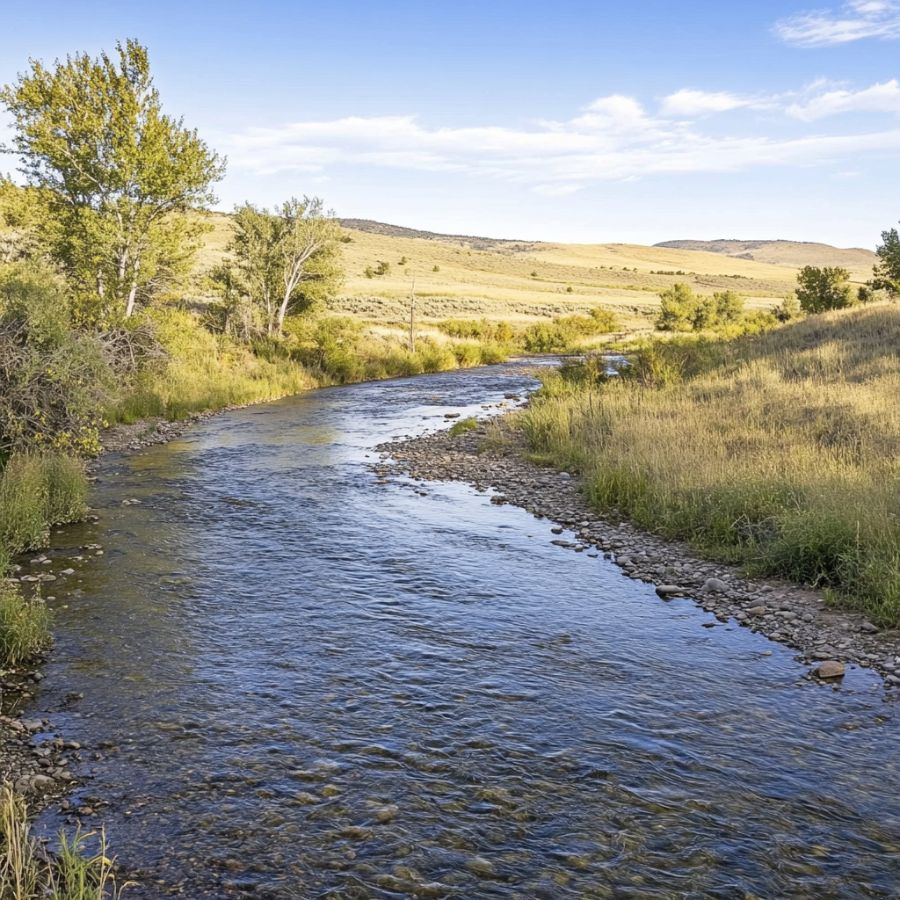
Deep Creek, located in Baylor County, offers rockhounds a scenic and peaceful setting to search for pyrite. This area is known for its rich sedimentary formations, including limestone and shale, which sometimes contain mineral deposits like pyrite.
Pyrite is often found here in small, metallic cubes scattered among gravel and along the creek banks. The best time to search is after heavy rain, as fresh deposits may become visible.
Some collectors have also reported finding fossilized shells with pyrite replacement, which can make for unique and beautiful specimens.
Beyond pyrite, Deep Creek is also home to other interesting finds, such as quartz and calcite.
Badu Hill Quarry
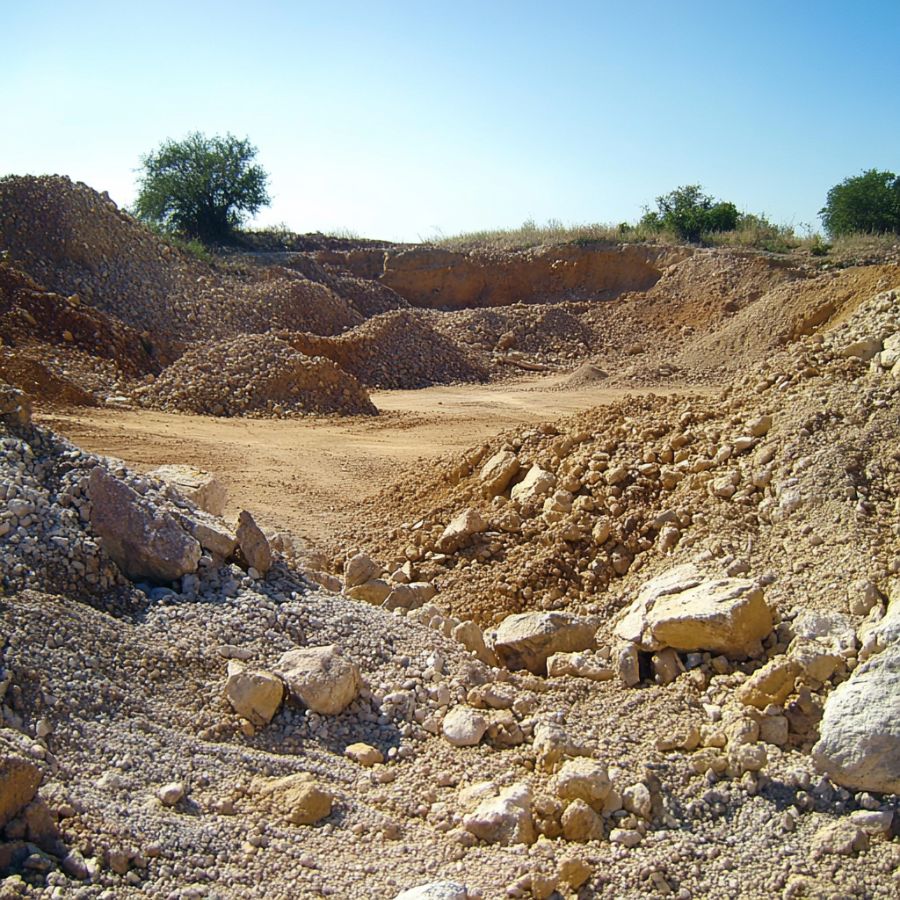
Badu Hill Quarry is located in the heart of Llano County, Texas. The quarry is situated within the Llano Uplift, a region famous for its exposure of ancient rock formations, including granite, pegmatites, and metamorphic deposits.
Pyrite here is often embedded within the host rock or as part of larger mineral clusters. The best places to search are in the loose rock piles and near exposed outcrops within the quarry.
Because of its natural association with other minerals, pyrite from this area is often discovered alongside magnetite, garnet, and even small traces of gold.
Make sure to always take safety precautions when searching in quarries, as loose rocks and steep ledges can be hazardous.
Bear Creek
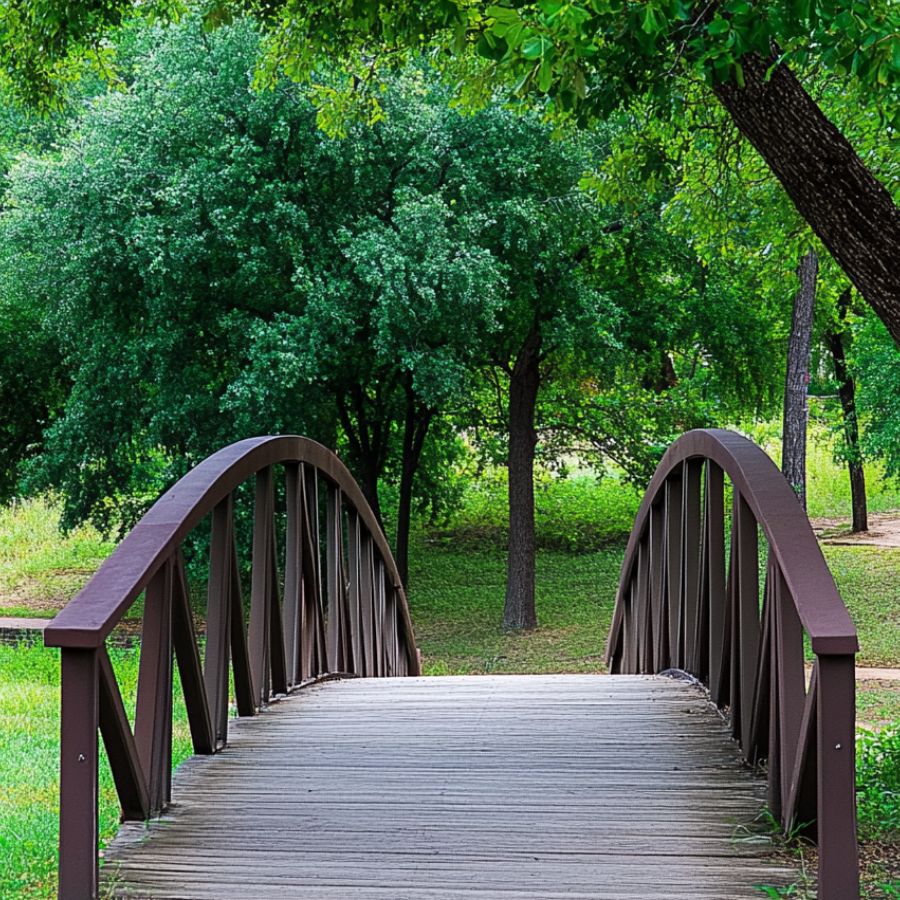
Just outside the bustling city of Dallas, Bear Creek offers an unexpected opportunity for rockhounds to uncover pyrite. The creek runs through layers of shale and limestone, which occasionally reveal small but well-formed pyrite specimens.
Most of the pyrite here appears as small golden flecks embedded in the darker rock or as isolated cubic crystals. Searching along exposed banks and sifting through sediment can also yield good results.
In addition to pyrite, Bear Creek is known for fossilized shells and plant remains, some of which have undergone pyritization—a process where organic material is replaced by pyrite over time.
Packsaddle Mountain

Texas’s Packsaddle Mountain is a well-known spot for rockhounds, especially those searching for pyrite. The area’s unique geological history, shaped by volcanic and metamorphic activity, has created ideal conditions for mineral formation.
Pyrite is commonly found here in association with quartz veins and within the weathered metamorphic rocks of the mountain.
If you search along exposed rock faces and in loose gravel near the base of the mountain, you might uncover pyrite crystals. Some specimens even show a striking brassy luster when freshly broken open.
Packsaddle Mountain is also known for other fascinating minerals like smoky quartz, topaz, and garnet.
Places Pyrite has been found by County
After discussing our top picks, we wanted to discuss the other places on our list. Below is a list of the additional locations along with a breakdown of each place by county.
| County | Location |
| Bastrop | Bombshell Bluff area |
| Bell | Temple |
| Bexar | Alamo Portland Cement quarries |
| Blanco | Cindrich/Hall Ranch |
| Brazoria | Clemens Dome |
| Brazoria | Damon Mound Salt Dome |
| Brewster | Bird Mine |
| Brewster | Chisos Mine |
| Brewster | Brewster County Consolidated Mine |
| Burnet | Capitol Rock |
| Burnet | Silver Creek Mine |
| Burnet | Southwestern Graphite Mine |
| Chambers | Barbers Hill Salt Dome |
| Culberson | Phillips Mine |
| Culberson | Cave Peak deposit |
| Culberson | Van Horn-Allamoore Mining District |
| Dallas | Chalk Hill Quarry |
| Dallas | Pinnacle Park |
| Duval | Benavides Mine |
| Duval | Palangana Uranium Mine |
| El Paso | Hitt Canyon Skarn deposit |
| El Paso | Fusselman Canyon |
| Ellis | Martin Marietta Materials Cement Quarry |
| Ellis | Waxahachie |
| Fort Bend | Blue Ridge Salt Dome |
| Fort Bend | Orchard Dome Mine |
| Gaines | Loop meteorite |
| Gonzales | Smith Mine |
| Hardin | Saratoga Salt Dome |
| Harris | Hockley Dome Mine |
| Harris | Humble Dome |
| Hudspeth | Indio Mountains |
| Hudspeth | Lonestar Mine |
| Hudspeth | Road prospect |
| Hudspeth | Silver King Mine |
| Hudspeth | Anaconda Number One prospect |
| Jeff Davis | Mayfield prospect |
| Jefferson | Spindletop Dome |
| Karnes | Hackney Mine |
| Karnes | Panna Maria Uranium Operations |
| Liberty | Moss Bluff Dome |
| Live Oak | House-Seale Mine |
| Live Oak | Lamprecht Mine |
| Llano | Dixie Graphite Mine |
| Llano | Boyd Mine |
| Mason | Haynie Mine |
| Matagorda | Gulf Hill Mine |
| Morris | Lone Star Deposits |
| Nacogdoches | Loco Creek Bridge roadcut |
| Pecos | Commache Creek Mine |
| Pecos | Los Nietos Occurrence |
| Presidio | Chinati Mountains |
| Presidio | Burney Mine |
| Presidio | Montezuma Mine |
| Presidio | Red Hills Cu-Mo deposit |


